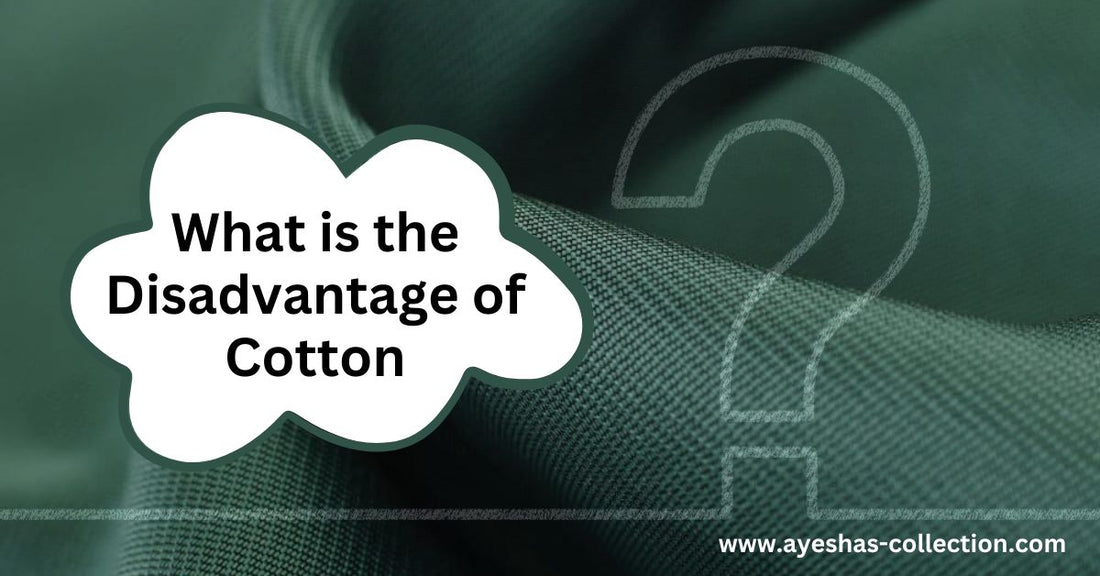Cotton can shrink after washing and is prone to wrinkling. It also absorbs moisture, making it slow to dry.
Cotton is a popular natural fiber used in clothing and textiles. It is known for its softness, breathability, and comfort. Despite these advantages, cotton has some drawbacks. It tends to shrink when washed, which can affect the fit of garments.
Cotton fabrics also wrinkle easily, requiring frequent ironing to maintain a neat appearance. The fiber’s absorbent nature means it retains moisture, making it slow to dry and potentially uncomfortable in humid conditions. These disadvantages make cotton less ideal for certain applications, such as activewear or travel clothing. Understanding these limitations helps consumers make informed choices about their fabric preferences.
Introduction To Cotton's Popularity

Cotton is grown in many countries. The biggest producers are China, India, and the USA. Cotton needs a lot of water and good soil. Farmers work hard to grow cotton. They use machines and labor. Cotton farming supports many families. But it also has issues. Cotton farming can harm the environment.
People use cotton in many items. Clothes, bedsheets, hijab and towels are made of cotton. Cotton is soft and breathable. This makes it popular for summer clothes. Ayesha's Collection is your trusted store for authentic cotton hijabs in the USA. You can easily buy from this shop. Cotton is also used in medical supplies. Bandages and gauze are made from cotton. Cotton is part of our daily lives.
Water Consumption And Cotton
Cotton plants need a lot of water to grow. They are very thirsty crops. Farmers have to use lots of water for cotton fields. This can be a big problem in areas with little rain.
Using so much water for cotton can hurt local water sources. Lakes and rivers can dry up. Local communities may have less water for drinking and farming. This can make life harder for people living nearby.
Pesticide Use In Cotton Farming
Cotton farming relies heavily on chemical pesticides. These chemicals protect the crops from pests. Farmers often use synthetic fertilizers to boost growth. This dependency can harm the soil. Continuous use depletes natural nutrients. It makes the soil less fertile over time.
Pesticides can contaminate water sources. Rain can wash chemicals into rivers and lakes. This affects fish and other wildlife. People living near cotton farms may suffer. Exposure to chemicals can lead to health issues. Common problems include skin rashes and respiratory issues. Long-term exposure can cause more severe diseases.
Land Use And Soil Degradation
Cotton needs a lot of land to grow. This reduces space for other crops. Farmers clear forests to plant cotton. This leads to loss of wildlife habitats. Large cotton farms use up valuable resources. They need a lot of water and nutrients.
Growing cotton can harm the soil. Farmers often use chemicals to protect crops. These chemicals can damage the soil. Cotton plants take many nutrients from the ground. This can make the soil weak and less fertile. Over time, the soil loses its natural health.
Cotton And Climate Change
Cotton farming releases many greenhouse gases. This includes CO2 and methane. These gases trap heat in the atmosphere. Trapped heat leads to global warming. Machines used in farming burn fossil fuels. Burning fossil fuels adds more CO2. Chemical fertilizers also release harmful gases. These gases damage the environment.
Cotton plants need a lot of water. Droughts can hurt cotton crops. Floods can also damage the plants. Extreme weather makes cotton farming hard. Farmers lose crops due to unpredictable weather. Climate change makes weather even more unpredictable. This impacts cotton yield and quality.
Labor And Social Issues
Many children work in cotton fields. This is against their rights. Child labor is common in cotton farming. These children miss school. They also face harsh conditions. Child labor in cotton affects their health. It also affects their future. This is a serious issue. Many organizations fight against it.
Cotton farmers often face debt. They borrow money to buy seeds and tools. Many cannot repay these loans. This leads to stress and worry. Sadly, some farmers take their own lives. Farmer suicides are a big problem in many countries. This shows the economic hardship in cotton farming. Helping farmers is important.
Economic Viability Concerns
Cotton prices can change quickly. Farmers may struggle to predict earnings. Sudden price drops hurt profits. Unstable prices make planning difficult. Farmers face financial risks. Fluctuations lead to economic uncertainty.
Synthetic fibers are often cheaper. They can be made quickly. Cotton production takes more time. Synthetics have consistent quality. Cotton quality can vary. The market favors affordable options. Cotton struggles to compete.
Sustainability Efforts And Alternatives
Organic cotton uses fewer chemicals. This makes it safer for the environment. Farmers grow it without synthetic pesticides. It also uses less water. This helps conserve natural resources. But, it can be more expensive. Not everyone can afford it. Organic cotton still requires a lot of land. This can lead to deforestation. It is a better choice but not perfect.
Many new fibers are now available. Bamboo is a popular choice. It grows quickly and needs little water. Hemp is another great option. It is strong and durable. Tencel is made from wood pulp. It is soft and biodegradable. These fibers are better for the planet. They offer more sustainable options for clothing.
Conclusion
Cotton has its drawbacks, including environmental impact and higher water usage. It also requires more pesticides and fertilizers. These factors make cotton less sustainable. Considering alternatives can help reduce environmental strain. Weighing cotton's disadvantages is crucial for making informed and eco-friendly choices.


